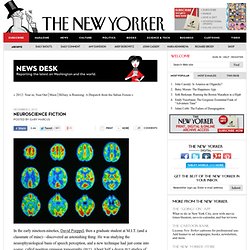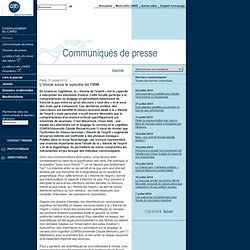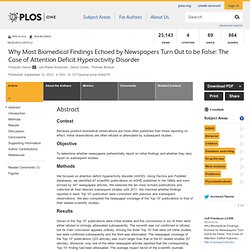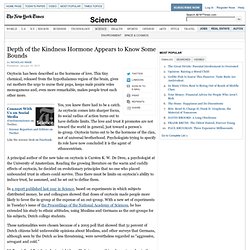

Evolution et troubles de personnalité. Is There a Blood Test for Schizophrenia? – VeriPsych Tests for Schizophrenia. Hot on the heels of the Bipolar Burble’s post about the neurobiological evidence for major depressive disorder comes this: Um, what’s that again? A company VeriPsych , affiliated with Rules-Based Medicine Inc. , is offering a blood test for schizophrenia. Or, more specifically, they are offering to test your blood and supply a likelihood that you have recent-onset schizophrenia. Communication animale et langage humain (Benveniste) Communication animale et langage humain (primatologie) Neurobiologie et psychanalyse. De l'inconscient fictif à la fiction consciente - Collège de France. Usages des neurosciences pour la psychanalyse - Collège de France. Neurosciences et psychanalyse une rencontre autour de l'émergence de la singularité-Introduction - Collège de France.
Plasticité et homéostasie à l'interface entre neuroscience et psychanalyse - Collège de France. Les neurosciences au tribunal : danger ou progrès ? Ali Benmakhlouf : « On ne peut réduire la complexité du psychisme humain à un cliché » Les neurosciences aux portes des tribunaux. Comment savoir si un accusé ment ou non lorsqu’il se dit innocent ?

Comment savoir si son discernement était ou non altéré lors du passage à l’acte ? Comment évaluer sa dangerosité future ? C’est à toutes ces questions que tentent de répondre les experts psychiatres mandatés par la justice. Souvent avec acuité. Parfois en se fourvoyant gravement, comme le rappelle l’affaire d’Outreau. La fraude scientifique s'intensifie dans les revues. L'Esprit malade, de Pierre-Henri Castel. Pierre-Henri Castel : « L’Esprit malade. Cerveaux, folies, individus What Neuroscience Really Teaches Us, and What It Doesn't. In the early nineteen-nineties, David Poeppel, then a graduate student at M.I.T.

(and a classmate of mine)—discovered an astonishing thing. He was studying the neurophysiological basis of speech perception, and a new technique had just come into vogue, called positron emission tomography (PET). Site internet de Jean Vion-Dury. Neurosciences et phénoménologie. Neurosciences et phénoménologie (suite) Remarques épistémologiques sur l'imagerie cérébrale. L'ironie sous le spectre de l'IRM. Dans nos communications avec autrui, nous devons aller constamment au-delà de la signification des mots.

Par exemple, à la question "avez-vous l'heure ? ", on ne répond pas simplement "oui". La distance entre ce qui est dit et ce que cela veut dire est étudiée par une discipline de la linguistique qu'on appelle la pragmatique. Pour cette science, la « théorie de l'esprit » donne aux interlocuteurs la capacité à franchir ce pas. Pour parvenir à décrypter le sens et les intentions cachés derrière un discours, même le plus banal, la « théorie de l'esprit » se sert de divers éléments verbaux ou non verbaux : les mots employés, leur contexte, l'intonation, les expressions corporelles...
La psychiatrie biologique : une bulle spéculative ? Why Most Biomedical Findings Echoed by Newspapers Turn Out to be False: The Case of Attention Deficit Hyperactivity Disorder. Context Because positive biomedical observations are more often published than those reporting no effect, initial observations are often refuted or attenuated by subsequent studies.

Objective To determine whether newspapers preferentially report on initial findings and whether they also report on subsequent studies. Methods We focused on attention deficit hyperactivity disorder (ADHD). Results Seven of the “top 10” publications were initial studies and the conclusions in six of them were either refuted or strongly attenuated subsequently. Conclusion Because newspapers preferentially echo initial ADHD findings appearing in prominent journals, they report on uncertain findings that are often refuted or attenuated by subsequent studies. Figures. Psychiatric Molecular Genetics and the Ethicsof Social Promises. Vikram Patel : La santé mentale pour tous en impliquant tout le monde.
Neuroscience. Apprendre au XXIe siècle: interview de Stanislas Dehaene. La nouvelle école capitaliste. Neuroeconomics. Oxytocin increases trust in humans. The Dark Side of Oxytocin, the Hormone of Love - Ethnocentrism. Yes, you knew there had to be a catch.

As oxytocin comes into sharper focus, its social radius of action turns out to have definite limits. The love and trust it promotes are not toward the world in general, just toward a person’s in-group. Oxytocin turns out to be the hormone of the clan, not of universal brotherhood. Psychologists trying to specify its role have now concluded it is the agent of ethnocentrism. A principal author of the new take on oxytocin is Carsten K. In a report published last year in Science, based on experiments in which subjects distributed money, he and colleagues showed that doses of oxytocin made people more likely to favor the in-group at the expense of an out-group. These nationalities were chosen because of a 2005 poll that showed that 51 percent of Dutch citizens held unfavorable opinions about Muslims, and other surveys that Germans, although seen by the Dutch as less threatening, were nevertheless regarded as “aggressive, arrogant and cold.”
In Dr. Dr. Oxytocin increases generosity. Human beings routinely help strangers at costs to themselves.

Sometimes the help offered is generous—offering more than the other expects. The proximate mechanisms supporting generosity are not well-understood, but several lines of research suggest a role for empathy. In this study, participants were infused with 40 IU oxytocin (OT) or placebo and engaged in a blinded, one-shot decision on how to split a sum of money with a stranger that could be rejected. Those on OT were 80% more generous than those given a placebo. OT had no effect on a unilateral monetary transfer task dissociating generosity from altruism. Rachel Botsman: The currency of the new economy is trust.
Neuroeconomics: The Consilience of Brain and Decision. Paul W. Glimcher 1 * , and Aldo Rustichini 2 Economics, psychology, and neuroscience are converging today into a single, unified discipline with the ultimate aim of providing a single, general theory of human behavior. This is the emerging field of neuroeconomics in which consilience, the accordance of two or more inductions drawn from different groups of phenomena, seems to be operating. Economists and psychologists are providing rich conceptual tools for understanding and modeling behavior, while neurobiologists provide tools for the study of mechanism.
The goal of this discipline is thus to understand the processes that connect sensation and action by revealing the neurobiological mechanisms by which decisions are made. 1 Center for Neural Science, New York University, New York, NY 10003, USA. Behavioral and Neuroeconomics of Drug Addiction: Competing Neural Systems and Temporal Discounting Processes.